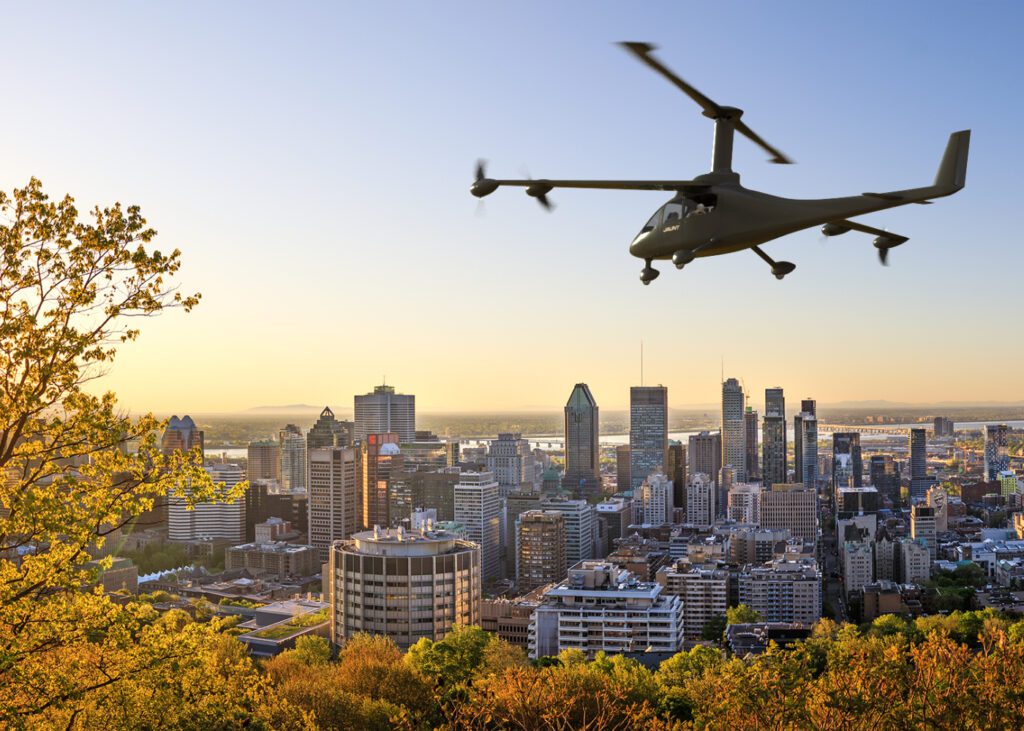
Avionics asked industry leaders Honeywell Aerospace, Jaunt Air Mobility, Archer Aviation, and Joby Aviation for their thoughts on the current certification process for eVTOL aircraft in the U.S. (Photo courtesy of Jaunt)
Manufacturers of electric vertical take-off and landing (eVTOL) aircraft are working closely with the Federal Aviation Administration (FAA) and the European Union Aviation Safety Agency (EASA) to establish a path to certification and make progress towards achieving certification for these new types of vehicles.
Jaunt Air Mobility plans to launch by 2026, while Archer Aviation expects to begin its eVTOL aircraft operations by the end of 2024. Joby Aviation has also outlined a launch date in 2024. Whether these objectives will be possible or not depends on the regulatory framework in place for advanced air mobility (AAM) systems.
Jia Xu, CTO and senior director of engineering and unmanned aerial systems/urban air mobility at Honeywell Aerospace, weighed in on the regulatory approach in the U.S. for certifying AAM aircraft and systems in an emailed statement to Avionics International. According to Xu, “The industry needs clarity and consistency to achieve safe operations at scale. If the intent is to create a more flexible, consistent and future-proof regulatory framework for certifying UAM vehicles then we are all for it.”
Xu also cautioned against drawing conclusions too quickly about the impacts of any potential changes to existing FAA regulations. “Honeywell will continue to work with the FAA and vehicle developers to ensure that eVTOLs achieve the highest levels of safety,” he wrote. He also commented that Honeywell welcomes efforts made to standardize requirements for certification of urban air mobility (UAM) aircraft.
Jesse Crispino, Chief Operations Officer at Jaunt Air Mobility, explained that certification of their Journey eVTOL model is being pursued under the long-established Part 27/29 rotorcraft rules. Traditional rotorcraft, with a single main rotor lifting device, continue to be categorized as Part 27/29, he stated.
The requirements for training commercial-powered lift pilots in the Code of Federal Regulations are very specific, Crispino remarked, and are distinct from requirements for helicopter and airplane pilots. “If the FAA sticks with using the Powered Lift certification, specific training will be necessary for a number of eVTOLs,” he wrote in an emailed statement to Avionics.
Jaunt announced a partnership with Avports earlier this year to evaluate eVTOL integration into the existing ecosystem. eVTOL aircraft are evolving very rapidly to meet future demand for AAM services, and Jaunt’s Chief Commercial Officer, Simon Briceno, commented that the company takes a very realistic approach to planning and implementing initial operations. More than 90% of the key elements that Jaunt needs to begin operations are already in place, he noted.
A representative from Archer Aviation shared with Avionics that their timeline for certification remains unchanged. “Archer has worked closely with the FAA on the certification process,” the representative mentioned.
“As a company pioneering a new form of transportation, we welcome the efforts of the FAA to provide a framework around the design and manufacture of an aircraft that is safe and approved for commercial use. We remain in constant communication and collaboration with the FAA and look forward to continuing our work with them towards certification of our production aircraft.”
Archer is one of only a handful of eVTOL developers that has received the Special Airworthiness Certificate from the FAA. One of the company’s recent achievements towards certification was its eVTOL’s first successful hover flight, which happened in December 2021. The company’s flight testing continues, and according to their Q1 2022 Letter to Shareholders, they are coordinating with the FAA to complete the G-2 Means of Compliance by the end of this year.
The founder and CEO of Joby Aviation, JoeBen Bevirt, offered his perspective on the topic during Joby’s first-quarter earnings conference call, “We share [the FAA’s] vision for reaching the next level of safety and efficiency,” said Bevirt. “We are in active conversations with them about the most expedient route to certifying our aircraft. All of the development work done by current applicants remain valid. They don’t expect any change of approach to add delays to type certification or operational approval. We’re not providing any change to our guidance and we remain focused on doing the important and necessary work to certify our aircraft.”
Joby’s team has achieved FAA acceptance for 80% of their means of compliance thus far, according to the Letter to Shareholders that was published last week. The company is now focused on manufacturing the tail and wing structural assemblies.